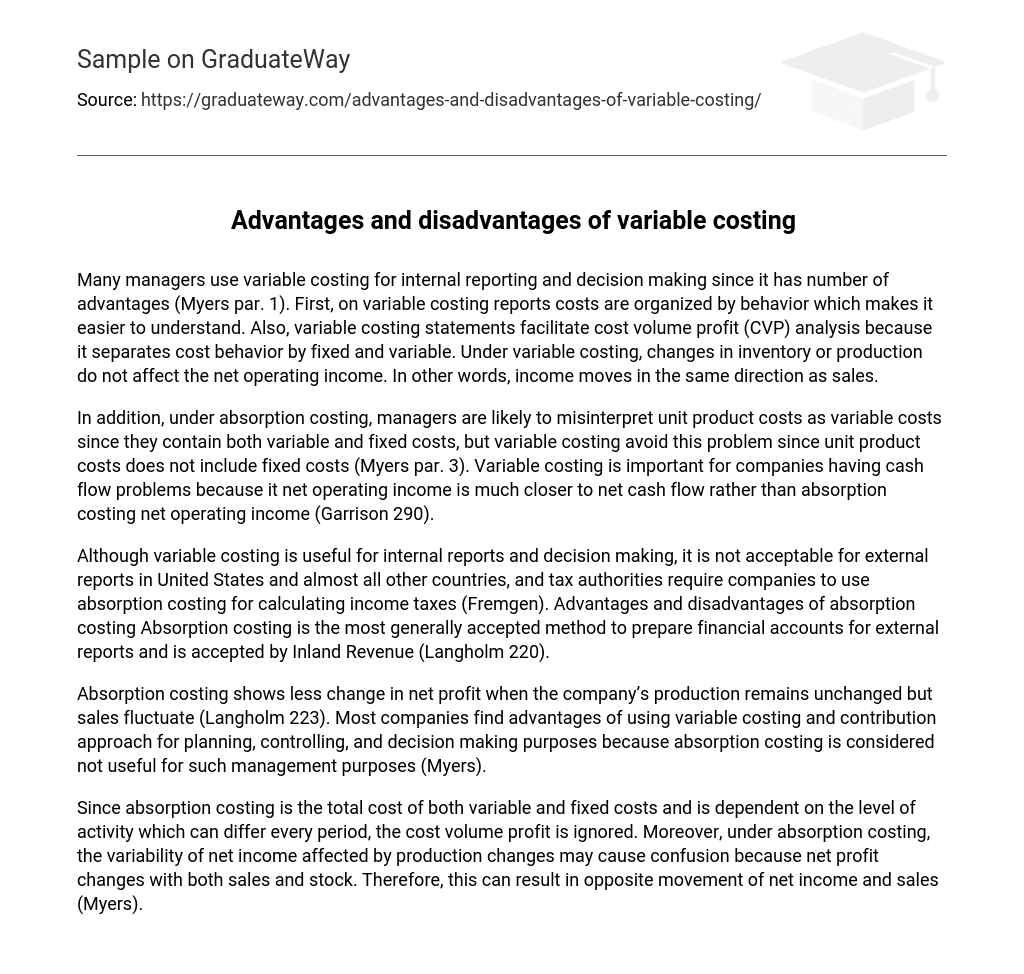Many managers prefer to use variable costing for internal reporting and decision making due to its numerous advantages (Myers par. 1). Firstly, variable costing reports categorize costs based on their behavior, making them easier to comprehend. Additionally, variable costing statements aid in cost volume profit (CVP) analysis as they separate costs into fixed and variable categories. With variable costing, fluctuations in inventory or production do not impact the net operating income. In simpler terms, income fluctuates in sync with sales.
Under absorption costing, managers may misinterpret unit product costs as variable costs because they include both variable and fixed costs. However, variable costing avoids this issue as it excludes fixed costs from unit product costs (Myers par. 3). For companies facing cash flow issues, variable costing is crucial as its net operating income is more closely aligned with net cash flow compared to absorption costing net operating income (Garrison 290).
While variable costing is valuable for internal reports and decision-making purposes, it is not permissible for external reporting in the United States and most other countries. Tax authorities require companies to use absorption costing for calculating income taxes (Fremgen). Absorption costing is widely accepted as the preferred method for preparing financial accounts for external reports and is also accepted by Inland Revenue (Langholm 220).
According to Langholm (223), absorption costing demonstrates a smaller fluctuation in net profit when a company’s production remains constant but sales vary. On the other hand, Myers argues that most companies prefer variable costing and the contribution approach for planning, controlling, and decision making since absorption costing is not deemed useful for these management purposes.
According to Myers, absorption costing includes both variable and fixed costs and is influenced by the level of activity, which can vary from period to period. This approach disregards the cost volume profit. Additionally, absorption costing can lead to confusion due to the impact of production changes on net income, as it is affected by both sales and stock. Consequently, this may result in contrasting movements of net income and sales.





